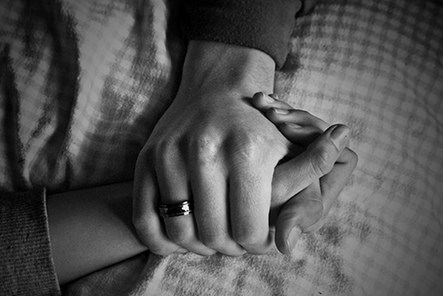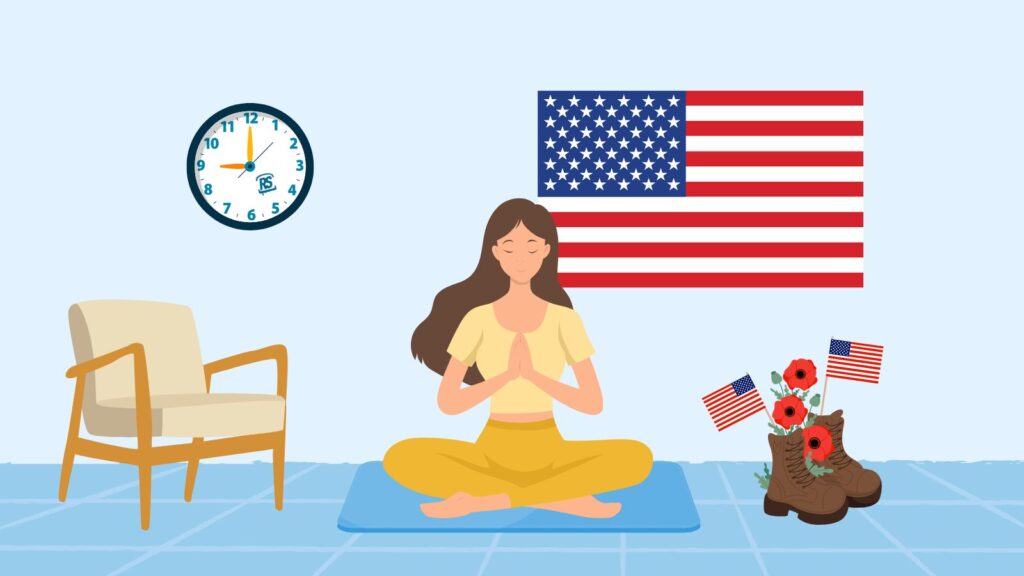In a more enlightened world, the discovery of a readily observable, highly focused, and deeply effective system of self-knowledge would be Headline News. Unfortunately, we live in an era where our values are extremely externalized with regard to the material, psychological and spiritual dimensions of our lives. In our culture, “more” is decidedly better, genuine self-reflection is rare, and God or what the Native Americans would call the Great Mystery exists solely as a belief in a power that exists outside of our selves. Phenomena, or our relationship to the experiences of our outer lives, including how we use our left brains to analyze our options in order to do things, counts for just about everything. On the other hand, noumena, or our relationship to what arises within our inner lives, including how we use our right brains to contemplate our thoughts and feelings in order to be ourselves, counts for little, or nothing at all. Therefore, if we cannot measure what we pursue via our five senses in order to get some kind of immediate payoff, material or otherwise, whatever else we may reflect upon remains of very little importance. Yet, I believe that a great deal of this could change for the better if people were able to understand and take to heart the following:
For the past twenty years, my wife and I have been using the Enneagram (pronounced any-a-gram and Greek for a nine-pointed star) as a primary tool for personal and spiritual growth in our life coaching practice. We see men and women of all ages, both married and single. For those of you who are unfamiliar with the Enneagram, a brief introduction is in order. The Enneagram is a new discovery about the workings of human nature, which reveals that there are nine archetypal character styles in the human family. These nine character styles are readily observable in people from all walks of life. Regardless of race, gender, or socio/economic background, every individual has one of these patterns at the core of their psychological makeup.
If we look at the Enneagram below, we see an interesting symbol made up of three components: the circle, the inner triangle and the outer hexagonal figure. Next to each of the nine points on the Enneagram are a name and a number, both of which are used to identify a particular character style. For example, at the top, the name, the Assertive Mediator, and the number, NINE, both identify that particular style. The numbers are not related to numerology, nor are they hierarchical in any way. They simply serve as “place holders” on the symbol to refer to each of the nine character archetypes. Each of the numbers is connected to two others. Therefore, every person has one of these character styles at the core of his or her personal psychology, which is also augmented or enhanced by two others.
For our purposes, we see that the Enneagram symbol acts as a blueprint for the way in which nine character archetypes common in the human family are organized — both by themselves (numerically) and in relationship to each other (intersecting lines). In The Power of Myth interview with Bill Moyers, Joseph Campbell defines archetypes as “expressions of the structure of the human psyche.” These nine character archetypes are best understood as the building blocks of human character in all of its variations. However, in the last analysis, why the family of human character archetypes is organized so perfectly by this remarkable symbol, remains an enduring mystery.
Archetypes are recurring themes and patterns in the human psyche. At various times in our history, many different kinds of archetypal systems have emerged out of various cultures. The Tarot came out of ancient Egypt, and is comprised of twenty-two higher arcana, and fifty-six lower arcana cards, all of which are pictorial in nature. The higher arcana of the Tarot depicts Cosmic or Divine forces, such as Strength, Mastery, Judgment, and Death that are considered to be sacred, while the lower arcana depicts forces that are more practical or mundane, including how we relate to our resources, emotions, thoughts, and spiritual potential.
Astrology, which emerged from numerous cultures throughout the world, including ancient Egypt, India, and China is perhaps the most universally recognized archetypal system. An astrology chart is comprised of a Zodiac that is divided into twelve signs, with both human and animal representations. The signs correspond to twelve houses that describe various aspects of the psyche, as well as other dimensions of life. Astrological readings provide individuals with both psychological and spiritual insight via interpretations of the movements of the planets.
The I Ching, or the Book of Changes, which is Chinese in origin, uses coins to consult an oracle in order to discern various hexagrams that reveal events. Individuals gain personal and spiritual insight by reflecting upon pairs of opposites, such as good and evil, and heaven and earth. The Runes, which are Norse in origin, contain twenty-four symbols that are also used in an oracular fashion to discern future occurrences.
Each of these forms of ancient wisdom is intended to reveal dimensions of wisdom that integrate what is Sacred about our lives into that which is commonplace, so we may reflect upon ourselves more deeply, and make important changes. At the heart of all archetypal awareness is the principle of synchronicity, or the premise that what we experience in our outer lives is a direct reflection of what we experience in our inner lives. When we develop archetypal awareness, we discover the amazing ability to bring both our inner and outer lives together. Instead of being at odds with each other, our inner and outer lives work together in concert. Having this capacity allows us to grow on many levels to reach our potential: physically, emotionally, mentally and spiritually.
Within the last forty years, the discovery of a distinctly different group of archetypes has emerged that is not oracular in nature, but rather describes human nature in ways that are both intimate and confrontational — the nine archetypal character styles of the Enneagram. The word character is derived from the Greek, “charaxo,” which means to engrave. What the Enneagram reveals to us is that at the level of our characters, the essence of who we are and who we can be is already etched or written into our basic human nature. If we truly want to understand others and ourselves, all we have to do is to learn how to read the code of our characters, which Enneagram awareness helps us to do, in a most dramatic way. Character, in this sense means many things including, how we see ourselves, how others see us, how we see the world, what motivates us, for better and for worse, and even more importantly, whether or not we are able to draw upon our strengths in order to let go of our weaknesses, when we are feeling stressed or overwhelmed.
In order to get a better grasp of what an archetypal character style actually is, and how it functions, consider a modern metaphorical example, a computer. In order to work properly, a computer must have an operating system. Without it, the computer cannot successfully run its myriad applications. As people, we function similarly in that our archetypal character styles correspond to the roles of various computer operating systems such as Windows, OS2, or Unix. In essence, they are very much like “human” operating systems.
Therefore, our individual archetypal character styles are analogous to the original, hardwired designs of computers that translate, interpret, direct, manage, and referee our individual responses to our life experiences, or how we choose to “run” our applications. One person might have a “Unix” operating system, while a friend or family member a “Windows,” etc. The intelligence that informs each of us about our particular styles originates in our right brain, (prior to the technical, analytical thinking of our left brain), and acts as a powerful resource to help each of us to be ourselves.
As an archetypal system, the Enneagram has two dimensions; one that is horizontal and the other that is vertical. Horizontally, the Enneagram is itself, a composition of nine character styles. Much like the colors in the rainbow, each style is very distinct from the next. For example, when we look at the diagram, we see the names at the top are the Benevolent Leader, the Assertive Mediator, and the Elated Reformer. Each of these styles, like the colors, red, yellow and blue, are very distinct from each other. Therefore, when we learn to recognize them in the people that we know, depending upon each of their particular styles, they will look and behave very differently.
Vertically, each Enneagram style is comprised of three very different ranges of behavior: at the top, healthy or mature, at the bottom, unhealthy or immature, and in the middle, more average. What this means is that depending upon how healthy their characters are, two people with the same character style can look and behave very differently. For example, a person with the Benevolent Leader character style can be very healthy like Dr. Phil McGraw, who works very hard to help others in the mental health and personal growth arena, or very unhealthy like Joseph Stalin, the Russian dictator who murdered millions of his own people after World War II. A person with the Genuine Motivator style can be very healthy, like the actor, Paul Newman, who created a large charity foundation by selling health food products, or very unhealthy, like the football player, O. J. Simpson whom many believe savagely murdered his ex-wife and her friend. For each of the nine styles, behavior can range from that which is most immature and even psychotic, to that which is most mature and virtually enlightened, with a middle range of behavior in between the two. Most of us experience everyday life in the average or typical range.
In much of the Enneagram literature there is a common misnomer that refers to the Enneagram character archetypes as personality types. As described above, character is all about what motivates us, for better and for worse at the core of our psychology, and whether we choose to take responsibility for our behavior. Personality actually refers to the mask or appearance each of us presents to the world, which is commonly experienced by others as superficial, or transitory.
Whenever we use the word personality in place of the word character to “brand” the content of an Enneagram character style, we convey a misleading conception that waters down what the Enneagram actually is, and how to use this amazing body of wisdom in order to outgrow, our deepest, most ingrained, and often most detrimental patterns of behavior. As noted Enneagram author, Claudio Naranjo, explains on page six of his book, Character and Neurosis, “Character points to what is most constant in a person,” while personality, certainly in common usage, is that part of each of each of us that is most changing.
When we make the distinction between character and personality, we are not simply quibbling over terminology. Generally speaking, the word, personality, denotes a different level of meaning, which is often very misleading. The word character lends itself to being described and understood as a series of traits, that are recognizable and therefore stable, and which are also beyond the scope of this essay. Simply put, character has two primary modalities: what truly motivates each of us psychologically, for better and for worse, and how we integrate our motivation, into the way in which we see the world. For example, the ONE in the Enneagram, the Elated Reformer is motivated for order, sees the world in ethical terms, and can use that motivation either positively or negatively, while the TWO, the Honest Helper is motivated for favor, or to be liked, sees the world in altruistic terms, and can also use that motivation either positively or negatively.
When I work with my clients, I often tell them this personal anecdote. In 1966, when I was nineteen, I left home with a great sense of urgency, which, at the time, I could not explain to myself, or anyone else. Very quickly, fate led me to meet and listen to J. Krishnamurti, the great Indian philosopher and spiritual teacher. He and other influences directed me to go to India, where I spent seven years, seriously studying Yoga and Eastern philosophy.
Fast forwarding to late 1980’s, I was now married for the second time with a number of children, a good amount of money, and lots of problems. I then become exposed to the Enneagram. Once I determined my character archetype, I was both disturbed and fascinated. I was disturbed, because after over twenty years of yoga practice and exposure to very refined spiritual influences, I realized that I didn’t “know” myself nearly as well as I had imagined. I was fascinated because there, in the early Enneagram books, was a core description of what I instinctually knew I had been missing — the necessary self-knowledge that would lead me to recover a healthy psyche and find inner healing. Over the next several years, with reflection and practice, I was able to change my relationship to the psychic energies within me that not only threatened my well being, but also my relationships with my family.
What I was able to do for myself is exactly the same process that I introduce to my clients, which is essentially, very simple. First, you have to locate your particular Enneagram style, and make sure you have the right one. In my practice, many of the people who come to me have misidentified their pattern, so the first thing I do is to help them see themselves correctly. The next step is to immerse yourself in a three parted process, which I call recognizing, owning and practicing. First, you have to recognize that your particular style is, in fact, what is running the core of your personal psychology. Second, you have to own the implications of what you have recognized, for better and for worse. Third, having recognized and owned the implications of, for example, being a SEVEN, the Visionary Generalist, you have to practice new self-fulfilling behaviors in order to let go of old, self-defeating ones.
So, for example, as a ONE in the Enneagram, I am motivated to have order. When I get stressed by chaos, I tend to be controlling of others and my environment. When this happens, I have to remind myself to relax, be more yielding, and just go with the flow. On the other hand, my wife, as a FOUR is motivated to have romance, or the ideal. When she gets stressed by vulgarity, ugliness, or feelings of mediocrity, she tends to get very disenchanted and moody. When, this happens, she has to remind herself to affirm what is positive about herself and her life, be more ordinary, and happy about what she already has. When we both remember our practices, we get along much better in our marriage, and we both are much happier. And when one of us forgets, the other person is there to take the high road. We teach these skills to our clients, and we also provide them with other important tools as well.
One of the greatest benefits of becoming Enneagram literate, at least in relation to one’s’ own character style is that you will be able to take whatever you discover with you for the rest of your life. And to the degree that your new awareness becomes a psychological and/or spiritual practice, you will be able to use what you understand in order to face your issues, let go of self-defeating behavior patterns, and in essence, always keep growing. Many of our former clients who are couples tell us that they would not still be together, had they not worked with us to develop their Enneagram awareness.
Unlike conventional therapy where much of the focus is on the past, the life coaching process is very present oriented, which is in keeping with spiritual principles that have become well known through significant authors such as Eckhart Tolle in The Power of Now, as well as many Eastern teachings. As a means of coming into the present, working with your archetypal character style is very much like practicing a form of “Western” yoga, or a “yoga” of the psyche. The word yoga means to join or to harmonize. Therefore, the practice of contemplating our archetypal character styles creates the ability to join or integrate our higher intelligence, or conscious awareness, with our feeling intelligence (both of which are inherent in us) in order to face and let go of unconscious behavior patterns that are detrimental to our overall health and well being.
The more we are able to engage this practice, the more we realize that with regard to material possessions, balance is the key, self-reflection leads to self-possession and inner peace, and we are not separate from God or the Great Mystery. When we use our Enneagram awareness in order to name, or shed light upon various energies within our psyches, we become genuine observers of our thoughts and feelings. Simultaneously, we break the bonds of our unconscious identification with whatever may lie at the heart of our pain and misery. In this day and age, having access to such an amazing practice is in, and of itself, quite a miracle.
Douglas & Olivia Rosestone, who in practice in Northern California, have illustrated the entire Enneagram system with film clips from Hollywood’s classic period, and are currently writing a book. They can be reached through their web site www.relationshipren.com
Teaser image by samcaplat, courtesy of Creative Commons license.














